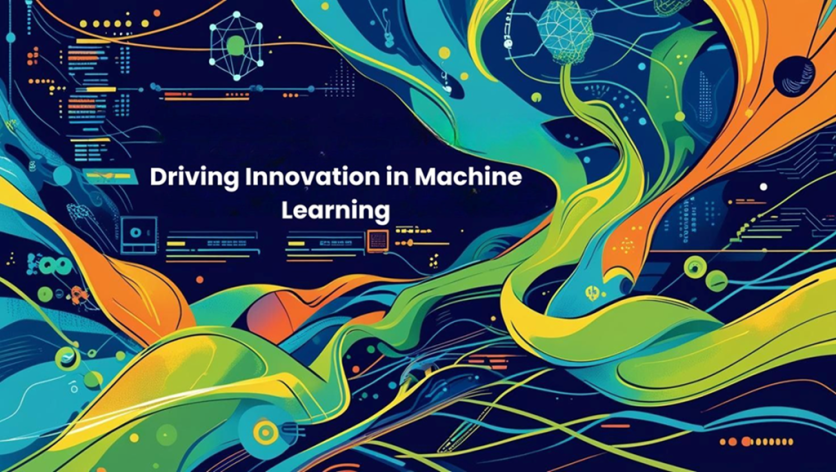
Artificial Intelligence is now the backbone of complex systems, automating monitoring, optimization, and decision-making across industries. To see this in action, let's explore its use in manufacturing and retail, focusing on the work of Vedant Agarwal, a Senior Software Engineer specializing in machine learning and scalable data systems.
In manufacturing, AI automates quality checks and enhances forecasting, significantly reducing downtime and waste, leading to cost savings and improved product consistency. In retail, intelligent algorithms drive personalized experiences and dynamic pricing, boosting customer engagement and revenue. We'll look at advanced demand forecasting and real-time anomaly detection in manufacturing, and smarter search systems in retail.
Vedant Agarwal: A Fusion of Engineering, Analytics, and Business Acumen
Vedant Agarwal's career is built on a multidisciplinary approach. His academic journey began with a Bachelor of Technology from Manipal University, where he developed strong analytical skills. He then gained essential business and managerial acumen with an MBA from NMIMS in India. This unique blend prepared him for his Master of Science in Data Analytics Engineering from Northeastern University, Boston, where he specialized in various advanced analytical techniques and applied machine learning.
Transforming Manufacturing with Predictive AI at Danfoss Power Solutions
After his education, Vedant joined Danfoss Power Solutions as a Machine Learning Software Engineer. Here, he championed AI as a predictive engine, analyzing sensor and production data to identify defects proactively and forecast demand with economic context.
One key project was developing an advanced anomaly detection pipeline for quality control. This innovative solution significantly reduced product defects. Vedant recalls a time the model flagged good components due to a subtle, unannounced change in sensor calibration. "We quickly realized the model wasn't 'wrong' in its detection, but its understanding of 'normal' had been subtly altered," Vedant explains. The team addressed this by implementing a real-time drift detection system to monitor data changes, triggering alerts for model recalibration. This was a crucial lesson in real-world data dynamics.
Vedant also built sophisticated forecasting models that captured seasonal patterns and broader economic trends, improving accuracy for production planning. At Danfoss, AI operated in a batch or scheduled fashion, feeding insights into operational planning cycles, emphasizing robustness and alignment with supply-chain timelines.
Powering Real-Time Retail Experiences at Walmart
Vedant transitioned to Walmart as a Senior Software Engineer in E-Commerce Search Signal Processing. This marked a shift to AI as the real-time pulse of user interaction. He led critical initiatives including a real-time data parser, a customer-journey stitching system, and a seller-quality optimization platform.
Vedant architected robust real-time pipelines using leading data technologies, enhancing Walmart's ability to tailor user experiences and fine-tune advertising strategies. These innovations notably lifted conversion rates and substantially reduced data-pipeline latency. "In e-commerce, speed is paramount," Vedant notes. In this setting, AI dynamically adapts to shopper behavior, demanding low-latency pipelines and continuous model validation.
From Planner's Tool to Front-Line Optimizer: AI's Versatility
Vedant's experiences at Danfoss and Walmart show how AI's role adapts. In manufacturing, it's a planner's tool for foresight and optimization. In retail, it's a front-line optimizer, reacting in milliseconds. Both highlighted the need for robust data pipelines, continuous monitoring, and understanding the business problem. This underscores AI's versatility and the need for domain-specific design and human oversight.
A Vision for Future Innovation: Navigating AI's Evolving Landscape
Vedant's leadership combines pragmatic innovation and cross-functional collaboration. He prioritizes clear objectives, scalable design, and measurable outcomes. By working closely with product managers, data scientists, and operations teams, he ensures AI-driven features align with business goals. This collaborative approach speeds deployments and fosters continuous improvement.
In conclusion, he constantly evaluates new statistical and machine learning techniques, integrating them with rigorous validation. Looking ahead, he aims to refine real-time and predictive ML solutions that adapt to shifting user behavior at scale. This future involves complex challenges like regulatory compliance, data privacy, and algorithmic bias. He plans to leverage cloud platforms and data streaming technologies for scale, robustness, explainability, and auditing. Through continuous learning and strong partnerships, Vedant ensures AI remains a responsive, trustworthy, and business-aligned force for innovation.
ⓒ 2025 TECHTIMES.com All rights reserved. Do not reproduce without permission.




